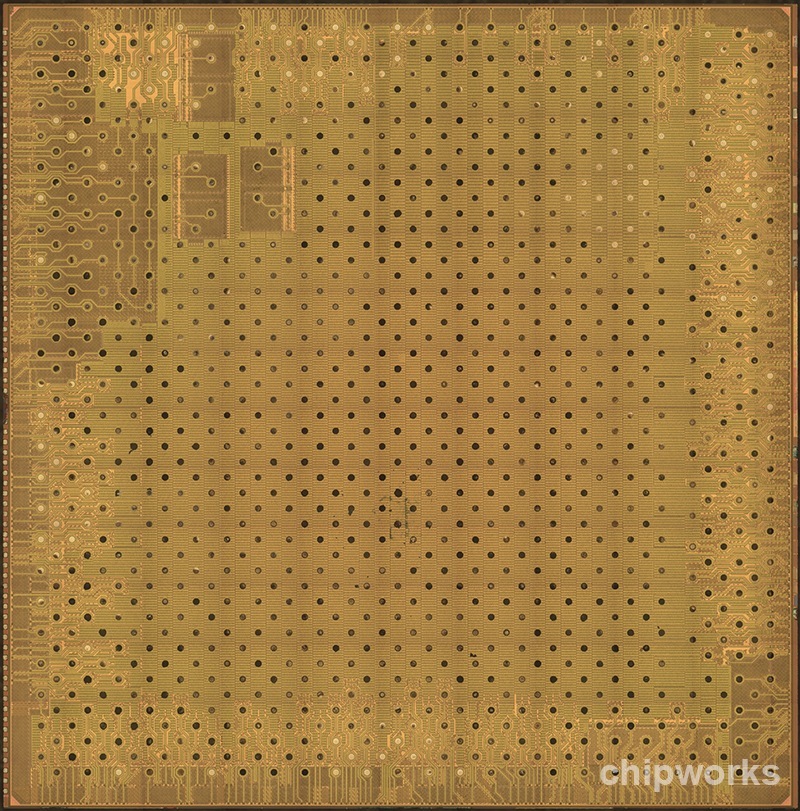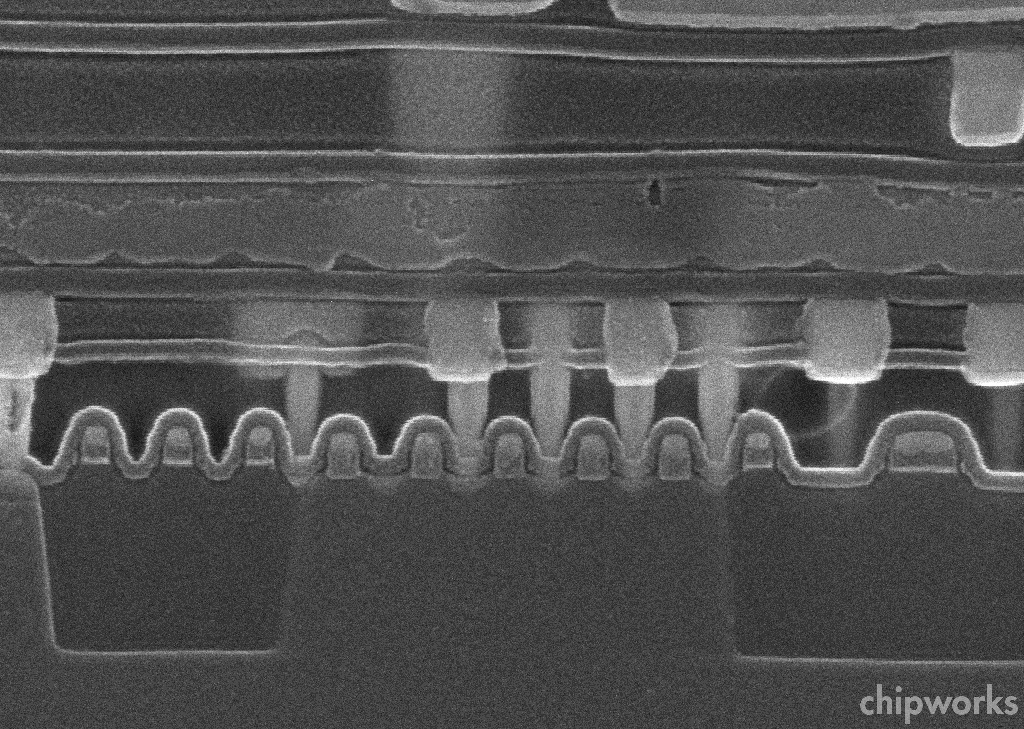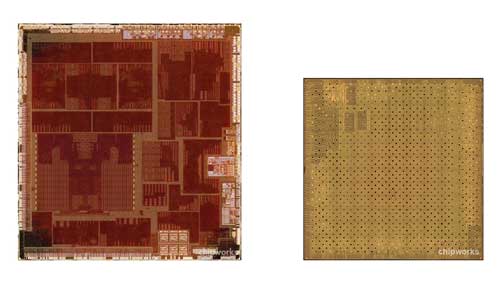
As we reported Monday, a retooled version of Apple’s $99 set-top box has been found to have a die-shrunk version of the iPad 2’s A5 chip rather than the A5X package, as previously speculated. Some market watchers even thought the new package is fabbed on Taiwan Semiconductor Manufacturing Company’s (TSMC) new 28-nanometer process. However, after conducting a thorough analysis of the silicon under sophisticated microscopes, chip wizards over at Chipworks and Silicon-IP have determined that the new A5 package is being fabbed on Samsung’s 32-nanometer process after all…
Other folks thought this A5 package is a lower cost variant that will power the budget iPhone and some even went so far to speculate that the new A5 represents a pipe-cleaner for TSMC in a lower volume device.
MacRumors passes along a Chipworks analysis telling us that the size reduction is more than a simple shrink, noting that “some functionality has changed too.”
The cross-sectional image of transistors seen above is evidence that the chip is still being fabbed by Samsung. Chipworks is able to determine “from the transistor spacing that it is still Samsung’s 32-nm process.”
In other words, the re-tooled A5 chip isn’t just a shrunken down version of the A5 chip we know from the iPad 2, it is definitely a new design.
Here’s a side-by-side size comparison of the “old” and “new” A5 design.
A 2012 version of the A5 chip powering the Apple TV (left) and the new, smaller A5 with 2013 die (right).
The new package measures 6.1×6.2 mm when compared to the prior generation A5 measuring 37.8mm2, down from the prior 32-nm variant at 69mm2.
Chipworks was also able to surprisingly conclude that this chip does not feature a stacked DRAM design that the previous versions do, though that could be just a matter of time as Apple and Samsung could still be lining up the process for building it with a package-on-package design.
The smaller the chip, the more densely the transistors are packed, shortening the distance the electrons have to travel between them. As a result, the chip is faster and consumes less power than its larger counterpart.
Chipworks is still working on obtaining polysilicon die photos that will reveal the A5’s layout in more detail.
A report this morning from the pretty inaccurate DigiTimes claims Apple is looking to diversify its chip suppliers, with Samsung, Intel and TSMC all reportedly vying for Apple contracts concerning a next-generation A7 chip.

